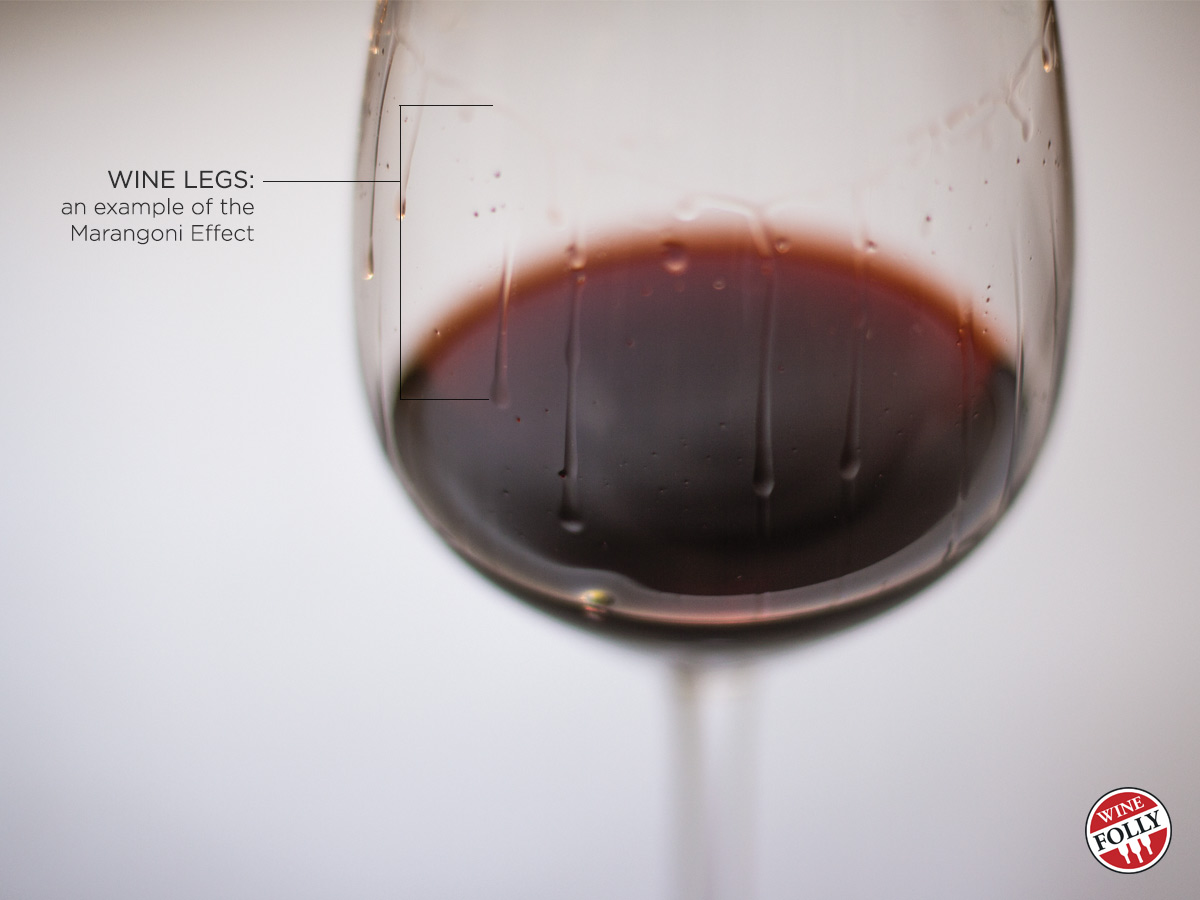Are wine ‘legs’ an indication of a higher quality wine? Find out more about wine legs tell you about wine and how you can make wine legs in your wine glass the next time you’re drinking.
What do Wine Legs Indicate?
Despite what you may have heard, wine legs or ‘tears’ are not an indication of quality of wine. It’s actually a scientific phenomenon that can tell you key information about the alcohol level in wine.
- High alcohol wines collect a higher density of droplets on the sides of the glass than low alcohol wines
- Sweeter wines are more viscous the tears will flow slower down the sides of a glass.

More “legs” or droplets can indicate either high alcohol content and/or high sugar content in wine. Wine legs are caused by alcohol evaporation from the sides of the glass.
What are wine legs?
Wine legs are the droplets of wine that form on the inside of a wine glass. Wine legs are an example of the Gibbs-Marangoni Effect, a phenomenon that is the result of fluid surface tension caused by the evaporation of alcohol. In fact, you can read an awesome article that NASA did on the Gibbs-Marangoni Effect in space.
Other names for ‘Wine Legs’
- Tears of Wine
- Church Windows
- Gibbs-Marangoni Effect
How to Assess Wine Legs
Before swirling your glass hold the wine at an angle to let it flow up one side of the glass. Next, level the glass and see how the wine flows (viscosity) and observe the density of the legs that form. If you see a lot of legs, you can guess that the wine is higher alcohol, which you can taste as a warming/burning sensation in the back of your throat.
Blind Tasting Tip: Build up your wine smarts by always testing and cross referencing with the wine label. With experience, you’ll start to notice over time that that some wine labels are off by nearly 1.5% ABV!
What’s Actually Happening with Wine Legs?
When you swirl your wine you create a thin film of wine on the surface of the glass. As the alcohol in this mixture evaporates (creating wine aromas), the leftover water-wine mix collects on the sides of the glass creating droplets that fall back into the glass.
By the way, if you have a closed bottle of wine and you shake it, you’ll notice that this phenomenon doesn’t occur! This is because no evaporation is happening. Evaporation is the key to why wine tears appear.


